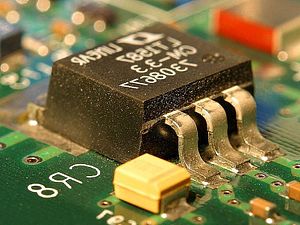Late last week, negotiations to expand the World Trade Organization’s Information Technology Agreement (ITA) collapsed over China and the United States’ conflicting demands. The ITA exempts certain high-tech products from tariffs; negotiators sought to expand the list of products covered by the agreement. China had a lengthy list of products it wanted to remain exempt from the new deal, while the U.S. was unwilling to accept so many restrictions.
According to the U.S. Office of Trade Agreements Negotiations and Compliance , the ITA currently accounts for approximately 95% of world trade in IT products, covering six main categories: computers, telecommunications equipment, semiconductors, semiconductor manufacturing equipment, software, and scientific equipment. The list of tariff-free products, originally established in 1996, is badly in need of an update to account for technological advances. The Information Technology and Innovation Foundation, a DC-based think tank, estimated that an updated ITA would help increase global trade by $800 billion.
Talks on the ITA broke down in July when China revealed a list of nearly 140 products it wanted exempted from the new ITA. For context, the ITA negotiations were considering eliminating tariffs on only 250 products, meaning China’s list of exemptions effectively removed well over half the items from consideration. When the talks restarted in November, China was willing to whittle its list down to less than 60 items — but was only offering to phase out tariffs on the remaining products, possibly taking 10-15 years to eliminate trade barriers entirely. Talks broke down once again, despite initial optimism that a deal could be reached in time for the WTO ministerial meeting in December.
In the aftermath, China and the United States traded barbs. “China’s refusal to show more ambition in product coverage under the WTO’s Information Technology Agreement is disappointing for all of the countries, companies, and workers who stand to benefit from an expansion in information technology trade,” U.S. Trade Representative Michael Froman said in a statement. China’s Commerce Minister Gao Hucheng denied the accusations, calling the U.S. “irresponsible.” According to Gao, the U.S. was at fault for setting the bar too high and being “unwilling to make any necessary concessions.”
The failure of the ITA talks serves as a case study in U.S.-China trade negotiations and doesn’t exactly inspire optimism that the two countries can someday negotiate even more comprehensive deals. Recently, there has been talk of a U.S.-China bilateral investment treaty, or of China potentially entering into the burgeoning Trans-Pacific Partnership. The ill-fated ITA negotiations should dampen optimism over these proposals. The heart of the disagreement is the United States’ insistence on free trade (as defined by the U.S.) versus China’s demand that the special conditions of its economy are taken into account.
China is not willing to give up on tariffs that protect its domestic industries, particularly in sensitive areas such as information technology. Edwards Snowden’s allegations that the U.S. government routinely spies on foreign countries have made China even more wary of its reliance on U.S. technology giants such as Cisco and Intel. China is unlikely to agree to remove trade barriers that would both increase its use of U.S. products and harm the market share of Chinese companies.
On the flip side, the United States has little reason to join a trade pact where China places exemptions on a large number of items. The Information Technology and Innovation Foundation estimated that the updated ITA could “increase direct U.S. exports of ICT products by $2.8 billion, boost revenues of U.S. ICT firms by $10 billion, and support creation of approximately 60,000 new U.S. jobs.” China’s exemptions would have gutted those potential benefits. As Gary Shapiro, President of the U.S. based Consumer Electronics Association, wrote to Chinese officials, the products for which China sought exemptions “are foundational to our industry.”
The IT sector is far from the only source of trade friction between the U.S. and China. Just within the confines of the WTO, China and the U.S. have filed suits against each other over automobile parts, rare earths, broiler products, shrimp, wind power equipment, and almost everything in between. And that’s just in the past three years. Given the laundry list of trade disputes between the two countries, it’s hard to see them ever coming to terms on a comprehensive economic agreement. Keep that in mind the next time China or the U.S. raises the idea of a potential bilateral investment treaty.

































